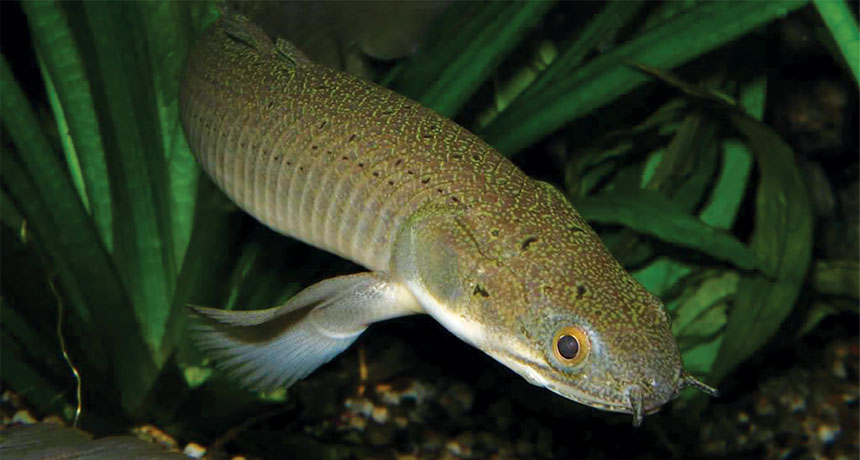
PRIMITIVE FISH Polypterus (shown) is a living member of a large group of vertebrates called ray-finned fishes. New evidence suggests that ray-finned fishes arose about 360 million years ago, after a major extinction event, then their diversity exploded.
Matt Friedman/Univ. of Michigan







